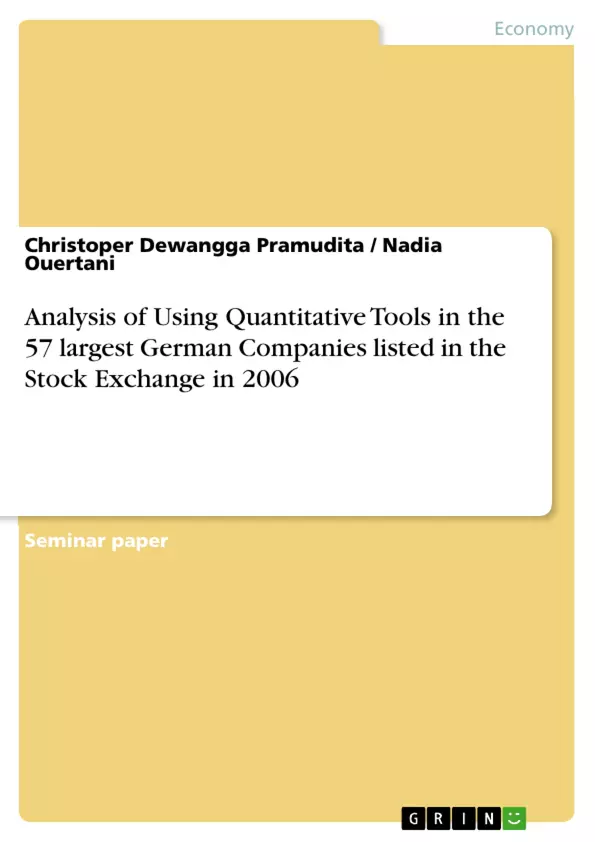According to Daimler Annual Report 2015 that we can find data about how many employees that Daimler AG have and whether or not the number of Daimler AG's employees gives impact on an increase or decrease of Daimler AG's revenue as well as earnings. Daimler AG involves five divisions such as Mercedes-Benz Cars, Daimler Trucks, Mercedes-Benz Vans, Daimler Buses and Daimler Financial Services. To facilitate a better comparison view between the number of employees, Earnings (EBIT) and Revenue the author decided to select the data with only arising the relevant data with his objectives.
From 2013 to 2015 in department of Mercedes-Benz Cars, Mercedes-Benz Vans and Daimler Financial Services there is a correlation between an increase of the number of employees with EBIT and Revenue. Conversely, in department of Daimler Trucks and Daimler Buses with the same period looks uncorrelated between an increase of the number of employees and Revenue. In Daimler Group a correlation between the high number of employees with an increase of their share price and their market capitalization is shown where in 2012 the number of their employees about 279.972 increased about 284.015. This increase was followed by an increase of share price from 68,97 to 77,58 and of Market capitalization from 73 to 83.
Because of that, in this paper we would briefly proof how strong the correlation between one factor with other factors through SPSS software which would be used to observe their correlation with aid of descriptive statistics (e.g. Histogram, Mean, Variance, Minimum, Maximum and Scatter plot) and inferential statistics (Linear Regression, Multiple Regression, Multicollinearity and Outliers) [...]
Inhaltsverzeichnis (Table of Contents)
- Introduction
- Analysis of Using Quantitative Tools
- Descriptive Statistics
- Histogram, Mean and Standard Deviation
- Minimum and Maximum
- Scatter Plot
- Inferential Statistics
- Linear regression
- Multiple Regression
- Multicollinearity
- Outliers
- A conclusion
Zielsetzung und Themenschwerpunkte (Objectives and Key Themes)
This paper aims to analyze the use of quantitative tools in the 57 largest German companies listed on the stock exchange in 2006. It investigates the relationship between the number of employees, earnings (EBIT), revenue, share price, and market capitalization. The analysis utilizes descriptive and inferential statistics to explore potential correlations and patterns in the data.
- The role of quantitative tools in analyzing business data
- The relationship between employee size and financial performance in German companies
- The application of descriptive statistics, including histograms, mean, standard deviation, minimum, maximum, and scatter plots
- The application of inferential statistics, including linear regression, multiple regression, multicollinearity, and outlier analysis
- The identification of potential correlations and patterns in the data
Zusammenfassung der Kapitel (Chapter Summaries)
- Introduction: This chapter provides an overview of the research topic, the objectives of the study, and the data source. It also introduces the concept of using quantitative tools in business analysis and discusses the specific statistical methods that will be employed.
- Analysis of Using Quantitative Tools: This chapter explores the application of both descriptive and inferential statistics to the selected data of 57 German listed companies. Descriptive statistics are used to characterize the data, while inferential statistics are employed to investigate potential relationships between variables. This includes exploring the use of histograms, mean, standard deviation, minimum, maximum, scatter plots, linear regression, multiple regression, multicollinearity, and outlier analysis.
Schlüsselwörter (Keywords)
This paper focuses on the application of quantitative tools, specifically descriptive and inferential statistics, in analyzing business data. The main keywords include descriptive statistics, inferential statistics, linear regression, multiple regression, multicollinearity, outliers, German companies, employee size, earnings, revenue, share price, market capitalization, and correlation analysis.
- Quote paper
- Bachelor of Arts Christoper Dewangga Pramudita (Author), Nadia Ouertani (Author), 2017, Analysis of Using Quantitative Tools in the 57 largest German Companies listed in the Stock Exchange in 2006, Munich, GRIN Verlag, https://www.grin.com/document/359241



